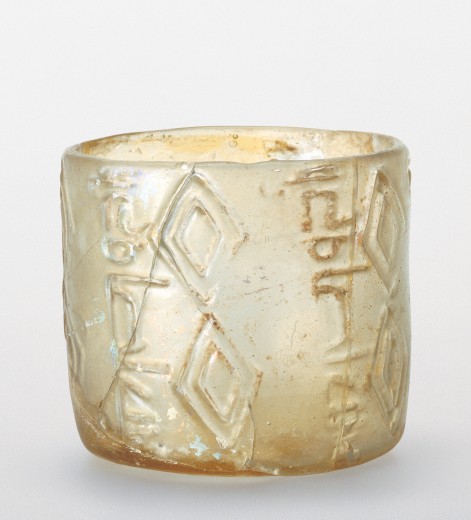



Title: Beaker
Date: 9th–10th century AD
Location: Eastern Mediterranean, Iraq or Iran
Materials: colourless glass with a yellowish-green tinge; blown, pincer-decorated and tooled
Dimensions: 7.3 x 8.2cm
Accession Number: GLS 473
Other Notes:
The pattern on the body consists of vertical inscriptions, barakah li-sahibihi (‘Blessing to its owner’), alternating with vertical pairs of double lozenges, one above the other. The inscriptions are pincered so as to read from the inside.
Glass drinking vessels with pincer-decorated inscriptions are rare.
Bibliography:
S.M. Goldstein et al, Glass. From Sasanian Antecedents to European Imitations, The Nasser D Khalili Collection of Islamic Art, volume XV, London 2005, cat.110, pp. 98–9.
Zoom
Close

Create your own collection of artworks that you can print or save as a PDF. Please enter you email to enable feature.
Small Flask | JLY 1075
Has been added to your collection.
TIP:
You can now access and view your collection from the main menu at any time.